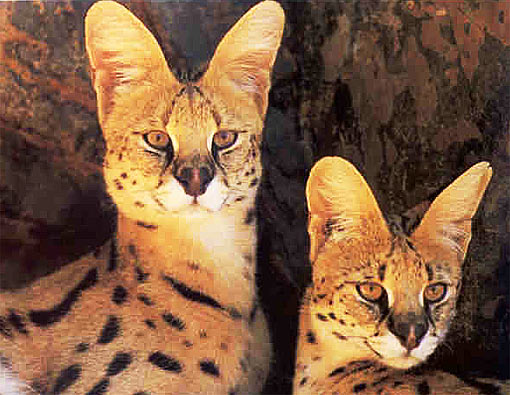Serval – Long-Legged, Little Head African Cat
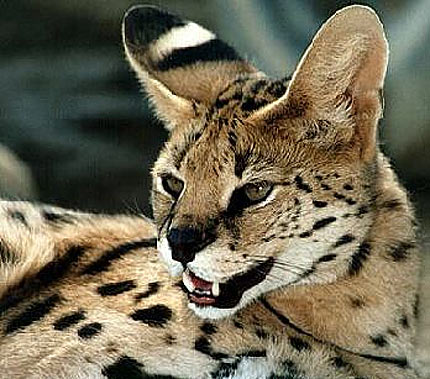
Descending from the same Felid ancestor as the lion, the serval, or the Tierboskat (as it’s known in Afrikaans, its name meaning “tiger forest cat”) is a medium-sized wild cat with a body length of about 23 to 36 inches (59 to 92 centimeters) and a body-weight between 15 and 40 lbs (7 to 18 kg).
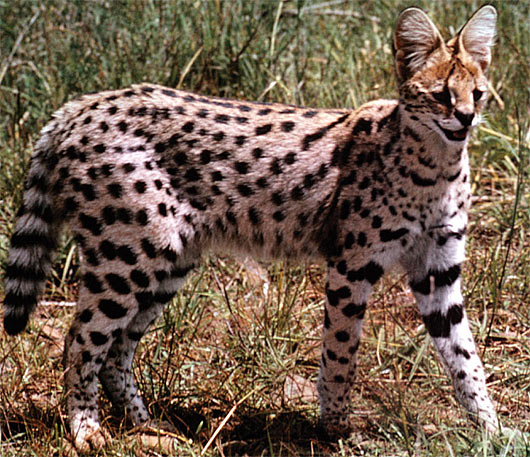
Of all the cats in the world, the serval has the longest legs relative to its body size; this is a result of the elongated metatarsal bones in its feet. The rest of the serval’s frame is slender, and it has a fairly small head, but it’s known for its large ears and extremely dexterous toes (which it uses to capture concealed prey).
A native of the savannas, forests, and mountainous regions of Africa (where it is found mostly south of the Sahara), the serval can be found in Cape Province, Mozambique, Sahel, Ethiopia, Algeria, Morocco, Tunesia, Transvaal, Tanzania, Uganda, Congo, Angola, Botswana, Togo, and Benin; it was also once prominent in Morocco, Tunisia, and Algeria. Since it needs water-ways within it’s territory, the serval will avoid deserts, dense jungles, and dry steppes.
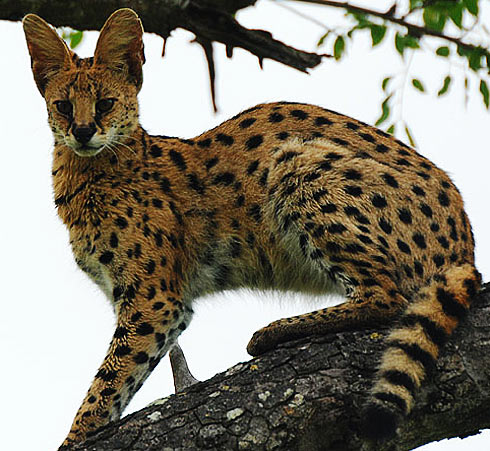
A nocturnal species, it will hunt almost exclusively at night, catching mostly rodents; but will also occasionally hunt during daylight (usually when disrupted by humans or larger predators), catching birds, hares, hyraxes, reptiles, insects, fish, and frogs. On rare occasions, it has been known to bring down deer, gazelle, and springbok. When eating larger prey, the serval will avoid eating organs, fur, feet, beaks, and hooves; it even has a very effective method of plucking birds (tossing it in the air while thrashing, thus removing all the feathers).
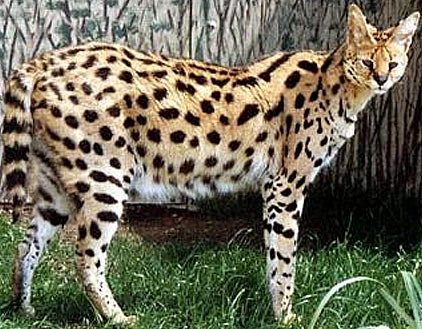
Servals are a very intelligent animal with amazing problem-solving skills, thus making them hard prey and effective predators. Also helping them survive, is their ability to run up to 50 mph (80 km/h) and jump up to 10 ft (3 m) in the air.
